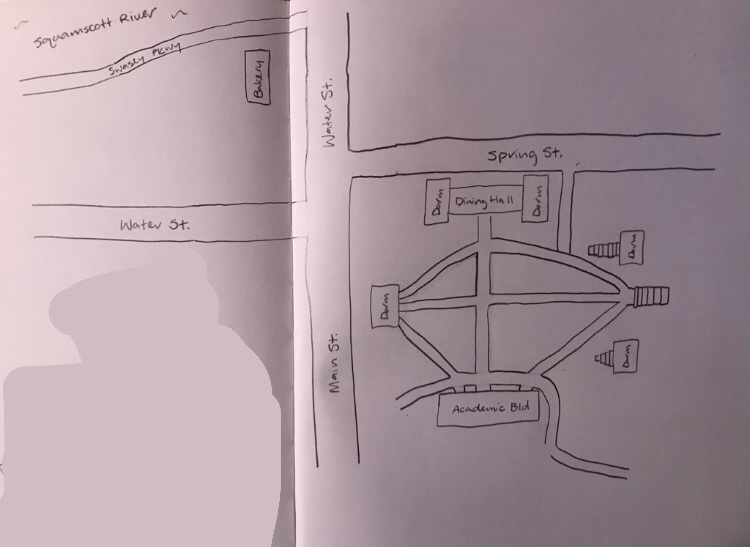The space that I have chosen is walking distance from a non-residential shopping area. It reminds me of the Main Line, a shopping street with a layout that encourages you to keep walking in one direction, unlike shopping centers that have lounging spaces. In Trecia Pottinger’s reading, she discusses how the residents of South Ardmore lacked affordable housing and how a push by white business and property owners for commercial zoning exacerbated the issue. The Water Street businesses are leased on land that is owned by the school that I have chosen as my space. The effects of this business decision show in the property prices of the surrounding area which stand out in stark contrast with other parts of the town. On the outskirts of Exeter are trailer communities. Another contributing factor to the division of social classes in this area is the pattern of high school boarding school parents that move to the town for a few years then leave once their children have graduated. The housing near the school is expensive because there is a constant demand for it, and these parents have the resources to outcompete the local population. I believe this is an example of the “exclusionary zoning” that Anne Rigsby writes about in her article.
This semi-private space is not used by the surrounding neighborhood residents very often, but the students and faculty do interact with the neighborhood very frequently. Students regularly go into town for a study break at the coffee place, a trip to the convenience store or grocery store, or a meal at a restaurant. The campus is easy to access although there is limited parking. This is reflected in the types of visitors the campus receives. Some examples include the local high schoolers that crash the dance parties and children that are enrolled in the programs offered by the social service clubs. Only those that are within walking distance or those who are dropped off can visit the campus frequently. I wonder whether constructing a new parking lot would vary the types of visitors they receive on campus or if it would change the relationship that the school shares with the neighboring communities.
(The second image isn't opening automatically, so you'll have to click on it to see.)
